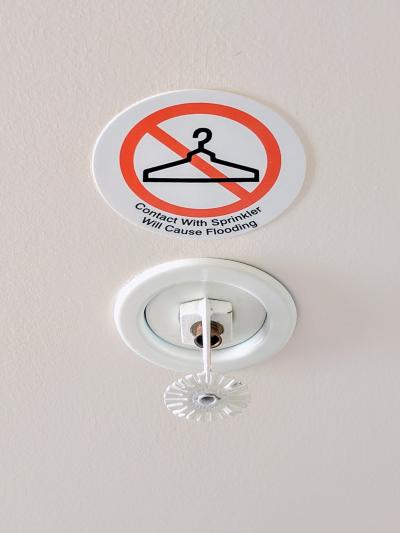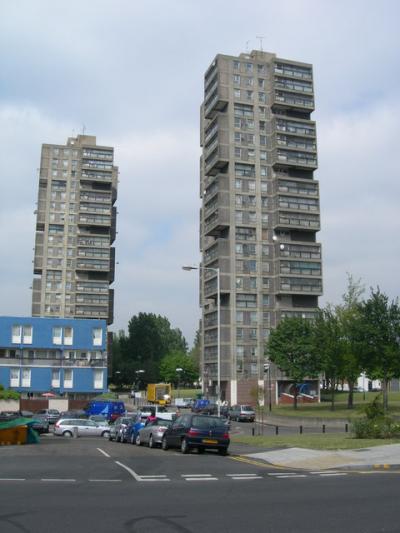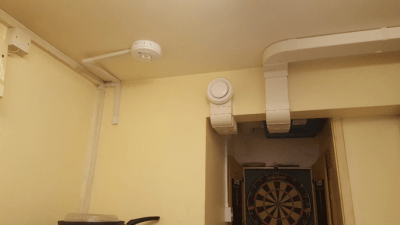
Recent evidence obtained by Sarah Jones MP following FOI requests discloses that only 112 (5.3%) of the 2,107 council-owned blocks in England of more than 10 storeys have had sprinklers installed. Earlier investigations by Inside Housing suggested that many more than this then had plans to install sprinklers, or were thinking about doing so.
But where retrofit is being considered, how difficult might it be to do the work if the blocks are mixed tenure? In this context, mixed tenure means blocks where there are both people renting flats from the social landlord and also ‘leaseholders’, that is, those who bought the flat under the Right to Buy (RTB) (or from someone who had already exercised this right). Mixed tenure complicates because of the rights that leaseholders have under their leases. Although there are standardised forms of RTB leases, there will be variation within them and so, in each instance, it will be necessary to read lease wording carefully. It is the lease that will determine whether the social housing provider (SHP) has a right to access and carry out works inside the flats in order to install sprinklers, and whether there is a right to recover costs from leaseholders. In addition, there will, in practice, need to be leaseholder support for the project.
Access rights: Leases grant ‘exclusive possession’ to leaseholders, and the landlord can enter only by exercising powers reserved under the lease wording or statutory powers. Many RTB leases will give only limited access rights. The authors of Closing the Gaps state that even the DCLG guidance on the Housing Health and Safety Rating System under the Housing Act 2004 assumes that there is no right of entry for most RTB leases, and further observe (at p24) that ‘we have seen documents and media which raise concern about landlord and regulator access to properties, particularly where a building is multi-tenured with property owned on a long leasehold’. Oxford City Council has recently undertaken a major refurbishment of 5 tower blocks. Much to their credit they decided (even prior to Grenfell) to install sprinklers for safety reasons, but this met with resistance from some residents and eventually OCC had to apply for an interim injunction to gain access for sprinkler installation (as well as other work). In many instances, access rights are likely to be linked to the landlord’s obligations under the lease so that they can, for example, enter the flat ‘for the purpose of carrying out all their covenants conditions and obligations’. This leads onto the question of what the obligations (and rights) of the landlord are.
Right to carry out works: This is often problematic. Whereas most leases impose an obligation to ‘repair and maintain’ on the landlord, many do not include any right to carry out ‘improvements’ (particularly old style RTB leases that have not been updated). Installing fire sprinklers, where there were none before, will constitute an improvement, as was held by the First Tier Tribunal (FTT) in the case involving the Oxford Tower Blocks. Further, the lease will need to be read carefully to see if these rights apply only to the ‘common parts’ or also extend to works carried out internally to the flats. If there is a right to carry out improvements, there will usually be a linked right to recover the costs of the work done.
Leaseholder support: Notwithstanding the safety benefits of sprinklers, there is often resistance from leaseholders. They may be worried about costs, privacy, on-going maintenance, reliability (not wanting ‘accidental’ triggers), disruption and aesthetics. Retrofitting will often involve surface mounting on ceilings of unattractive trunking; in a recent judicial review application (unsuccessfully challenging the decision by Birmingham CC to budget for retrofitting sprinklers) one of the concerns raised by the claimant was ‘the disruption to tenants that would be caused during the fitting works, and the unsightliness of surface-mounted retrofitted sprinklers and pipes’. In relation to the Oxford Tower Blocks, one resident interviewed by the local newspaper expressed dismay about the sprinkler system: ‘I don’t like it at all, would you like that pipe going through your floor? […] The pipe looks like an industrial style of sprinkler, and not for a home. I don’t like anything about it.’ Once installed, there has to be annual inspection (annual disturbance), and there are ongoing maintenance costs, possibly only £10-20 per flat, but potentially much higher (para 2.8).

Westbury Estate in Wandsworth, a mixed tenure high-rise block.
By Danny Robinson, CC BY-SA 2.0
Access rights and cost recovery are at issue in relation to the mooted retrofitting of sprinklers to 99 high-rise blocks in Wandsworth. Over 1/3 of the flats are leasehold, of which 55% are owner-occupied. The council took the decision to retrofit in June 2017, but 5 residents’ associations objected – together with a small number of individuals from other blocks and one non-resident leaseholder – indicating they were opposed to the Council’s decision to impose the retrofitting of works and recharge leaseholders. Some argued they were not necessary, as ‘many of the blocks have two staircases, no cladding and are designed to contain fires within the property’, and others were opposed ‘whether they have to pay for them or not on grounds of disruption and aesthetics’. In September 2018, the Council decided to refer the issues to the FTT. The papers and arguments involved here are all available online. The Council is arguing in its statement of case that under the leases it has powers to install sprinklers on the basis that it can decide what is ‘necessary to ensure the efficient maintenance’ of the blocks (with an additional argument mentioned in the case summary that sprinklers would be an amendment to the pipes and water courses). The estimated cost to each lessee is between £3500 and £5000, and the Council claims it has a fiduciary duty to pass on these costs if they are recoverable under the leases.
Delay caused by leaseholder resistance
In the Wandsworth case, the FTT hearing has still not been heard. Some of the leaseholders have applied to strike out the case, and the hearing on the strike out will not be until the end of 2019. If the case survives that, there will need to be the full hearing. And if the Council is found able to recover the costs, it will still then need to carry out a section 20 consultation, adding yet further delay.
In combination, this means that sprinkler installation is likely to be complex in most high-rise social blocks. There is no official data on how many RTB leases have improvement clauses, but in some of my other research I found that only 1/3 of social housing providers (SHP) said that all of their leases allowed them to reclaim the costs of building improvements. This came from a programme of research on energy retrofit conducted by me, David Weatherall and Roxana Willis, which found mixed tenure to be a major deterrent, even if there are improvement clauses. We were exploring how property law and governance arrangements complicate the ability to make energy upgrades to blocks of flats, and conducted a survey of social housing providers (SHPs) across England. There were 42 respondents, with stock ranging from 439 to 90,000 homes, with a median of 12,000 homes. The survey aimed to find out (1) the type and extent of energy-related refurbishment projects being undertaken on mixed tenure blocks, (2) the extent to which SHPs are dealing with title deeds which do not provide for cost recovery for improvements, (3) the extent and type of problems faced by SHPs in communicating and engaging with leaseholders in refurbishment projects, and (4) how providers work with leaseholders to finance projects. The findings suggest that significant numbers of energy-related projects do not proceed because of the legal issues, costs and complexities of the mixed tenure context.

A retrofitted sprinkler in a high-rise mixed tenure tower block apartment, Oxford.
Photo taken by Roxana Willis
These findings have important implications for the question of how difficult it may be to retrofit sprinklers in mixed tenure blocks given that installing sprinklers, like installing energy upgrades, will constitute an ‘improvement’ rather than ‘repair and maintenance’. Overall, 18 out of 40 respondents agreed with this statement: ‘anticipated or ongoing problems with private flat owners [had] prevented energy efficiency/renewable energy projects going ahead or being attempted in mixed tenure blocks.’ Where projects are going ahead successfully, it often appears to be by excluding leaseholders or whole blocks. Alternatively, SHPs may manage issues by not recharging costs to leaseholders, even where they are entitled to, but clearly this is only an option where the funding is available.
The experience of Wandsworth seeking to retrofit sprinklers is similar to the findings of our energy research: many RTB leases do not allow improvement work to be carried out, and projects in mixed tenure blocks may be difficult to manage, meeting with leaseholder opposition. Although there are many calls now for retrofitting sprinklers, it may not be a question of political will or cost alone that hinders installation but the complexities – and barriers – of property law.
__________
How to cite this blog post (Harvard style)
Bright, S. (2019). Retrofitting Sprinklers in Mixed Tenure Blocks. Available at: https://www.law.ox.ac.uk/housing-after-grenfell/blog/2019/07/retrofitting-sprinklers-mixed-tenure-blocks (Accessed [date]).
Share:
